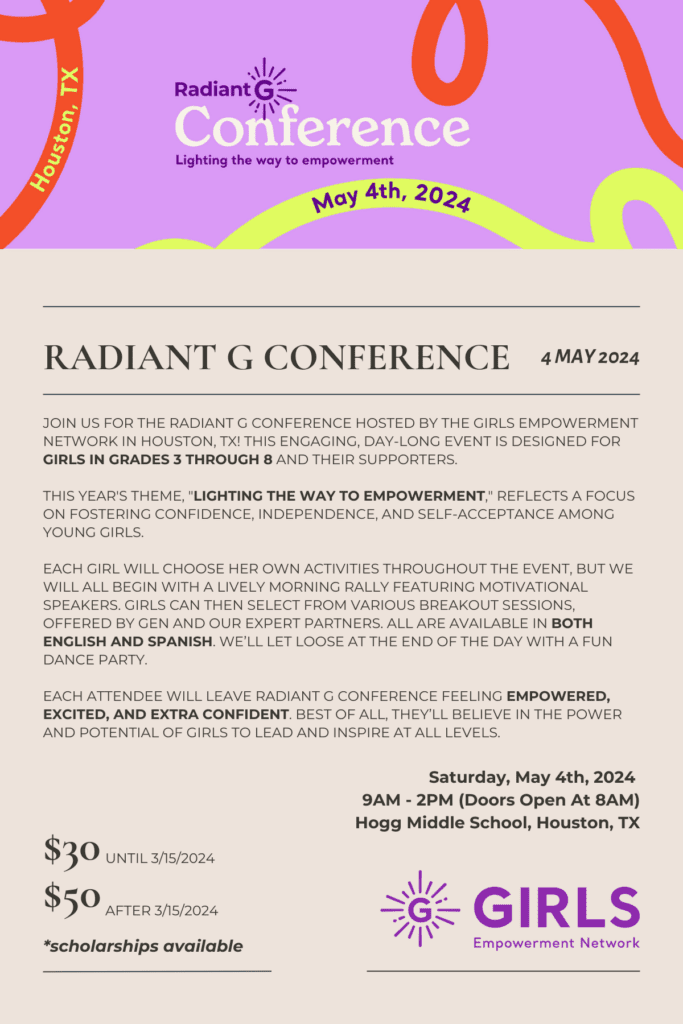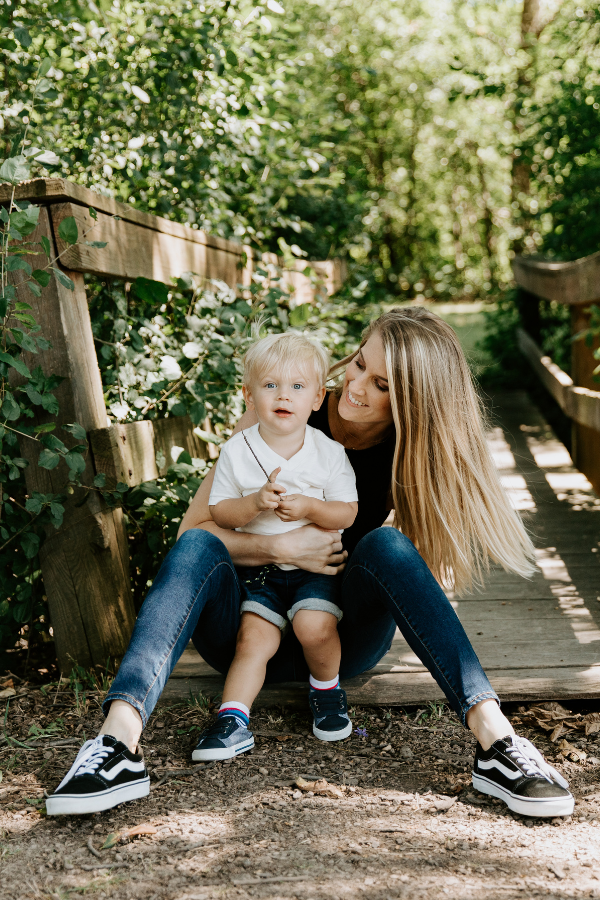
Here’s When to Start Applying for Preschool
Summary
Reflection Questions
Journal Prompt
As a mom, finding the perfect preschool can feel next to impossible—especially when you’re trying to secure a spot in a program that not only meets your child’s needs but also aligns seamlessly with your educational philosophies and expectations. The preschool application process is often fraught with concerns about competitiveness, the appropriateness of the educational structure, and whether your child will thrive in a new learning environment. Understanding the many preschool options—from their educational methodologies to their atmosphere and values—is key to easing these worries and making informed choices that pave the way for your child’s early educational success. Of course, getting accepted is an entire process, too. But don’t worry! We’ll answer all of your FAQs about how and when to apply for preschool throughout this article.
Answering All Your FAQs About Preschool Registration
What’s the Difference Between Pre-K and Preschool?

Pre-K and preschool are both early childhood education options, primarily distinguished by the age groups they serve and their educational objectives. Preschool programs typically start for children as young as two or three years old and continue until they are kindergarten age.
The primary focus in preschool is on developing basic social, emotional, and cognitive skills through play-based learning and interaction. Preschools provide a structured environment where children learn to interact with peers and follow routines, which fosters both social emotional learning and academic growth in a very broad and explorative manner.
Pre-K, or pre-kindergarten, specifically targets children who are one year away from entering kindergarten, usually around four to five years old. The curriculum in pre-K is more structured and academically oriented compared to preschool, with a clear emphasis on readiness skills for kindergarten. This includes more focused learning on language, literacy, early mathematics, and fine motor skills.
Pre-K programs often serve as a bridge between preschool education and the more structured learning environment of kindergarten, aiming to ensure that children are prepared to meet the educational demands that will be placed on them in the coming years. Both programs are designed to further child development in a social environment.
What Are the Different Types of Preschools?

Preschools vary widely in their philosophies and methods, allowing parents to choose a type that best fits their child’s needs and their educational preferences. Each type of preschool has its unique approach to early childhood education, reflecting different beliefs about how children develop best. Parents often choose a preschool based on their child’s personality, learning style, and their family’s educational values and goals. Below are some of the different types of preschools.
Waldorf
Waldorf preschools focus on creative play, routine, and rhythms. They emphasize imagination in learning, with activities that include storytelling, arts, crafts, music, and movement. Waldorf education tends to discourage the use of electronic media and instead promotes natural environments and materials.
Reggio Emilia
Originating in Italy, this approach views young children as capable of constructing their own learning. It emphasizes project-based learning, which stems from the interests of the children. The classroom environment is considered the third teacher, designed to be inviting and to provoke thoughts. Parents are also actively involved and play a significant role in the learning process.
Montessori

The Montessori method emphasizes independent learning, hands-on activities, and collaborative play. Children are encouraged to make choices in their learning, with teachers serving as guides. The classrooms are age-diverse, which promotes peer learning, and materials are specifically designed to be developmentally appropriate and self-correcting.
HighScope
HighScope preschools use active participatory learning, meaning children have direct, hands-on experiences with people, objects, events, and ideas. Children are encouraged to make choices about materials and activities throughout the day. Adults support these choices and help children think about their actions and findings.

Play-Based
In these programs, play is seen as the primary way children learn. Play-based preschools often look less structured than other types, although they are guided by educational principles that teachers use to set up the environment and interact with children. These preschools balance child-led and teacher-guided activities.
Bank Street
Developed by the Bank Street College of Education in New York, this approach is child-centered and focuses on developmental stages with emphasis on a responsive, experiential learning model. Activities are designed to be both play-oriented and academically enriching, incorporating social, emotional, and physical development.
Faith-Based
These preschools incorporate religious instruction into their curriculum along with general early childhood education. They are often associated with a church, mosque, temple, or other religious institution and include elements of moral education consistent with their faith.
When Do Schools Start Accepting Preschool Applications?

The timeline for accepting preschool applications can vary significantly depending on the school and its location, but typically, schools start accepting applications one year before the intended start date. Most preschools begin their enrollment process in the early months of the year—January or February—with deadlines often set for the spring to finalize enrollment by the summer.
However, some schools might have rolling admissions or different deadlines, so it’s important for parents to check specific dates directly with the preschools they are interested in, ideally well in advance of the school year they are planning for their child to attend.
At What Age Should I Apply for Preschool?

The ideal age to apply for preschool typically depends on the specific preschool’s age requirements and the developmental readiness of the child. Most preschools accept children as young as two or three years old, but the common entry age is around three to four years old.
Parents should begin researching and considering preschools when their child is around two years old, especially if they are aiming for a popular or competitive program that might have earlier application deadlines. This gives them sufficient time to understand the application process, visit potential schools, and prepare any necessary documentation.
It’s also crucial to consider the child’s social, emotional, and cognitive development to ensure they are ready to benefit from a preschool environment. This preparatory period allows parents to align their application timeline with both the preschool’s requirements and their child’s readiness for starting school.
What Are the Registration or Reservation Fees?

Registration or reservation fees for preschool are one-time payments made by parents to secure a spot for their child in the program. These fees can vary widely depending on the school, its location, and the type of program. The primary purpose of registration or reservation fees is to confirm a child’s place in the preschool and cover administrative costs associated with the enrollment and registration process. This fee ensures that the school can count on the child’s attendance and plan accordingly.
The amount can range from a nominal fee to several hundred dollars. In some cases, particularly in private or highly sought-after preschools, the fee can be quite substantial. Typically, these fees are non-refundable, meaning they won’t be returned if the child doesn’t attend the school. This policy helps schools manage their enrollment and avoid financial instability due to last-minute withdrawals.
It’s important to note that registration fees are separate from tuition fees. While the registration fee secures the spot, tuition is the ongoing cost of attendance. Parents should ask the preschool for detailed information about all associated costs, including whether there are additional fees for supplies, activities, or other services. This will help avoid any surprises and aid in budgeting for the preschool year.
What Are the Enrollment Requirements for Private School?

Enrollment requirements for private schools can vary significantly depending on the school’s policies, its educational philosophy, and location. Generally, private schools may require a combination of application forms, previous school records, recommendations, and standardized test scores. Additionally, most private schools conduct interviews with prospective students and their families to assess the fit between the school’s environment and the child’s educational needs and personality.
Furthermore, private schools often require proof of age and residency, up-to-date immunization records, and may have specific health assessments that need to be completed. Some schools also require entrance exams to evaluate academic readiness or aptitude in key areas such as math and language arts.
For younger children, especially those entering preschool or kindergarten, schools might assess social and emotional development through play-based evaluations. Parents should prepare to gather documentation and potentially engage in multiple steps of the application process when applying to private schools.
How Much Will It Cost?

The cost of preschool can vary widely depending on several factors, including the type of preschool, its location, and the length of the program (part-time vs. full-time). In general, private preschools tend to be more expensive than public or non-profit options. Costs can range from a few hundred to several thousand dollars per month. For instance, in major urban areas in the United States, the cost can be particularly high, sometimes exceeding $1,000 or even $2,000 per month for full-time enrollment.
Public and community-based preschools often offer lower or even no-cost options for families, subsidized by government programs or grants. Additionally, many states in the U.S. have introduced public pre-K programs that are free or low-cost to residents within the state or district. Low cost of free preschool programs are designed to make early childhood education more accessible and affordable for children ages three through five.
However, these public or subsidized options might have specific eligibility requirements related to income, location, or other factors. It’s also common for schools to offer financial aid or sliding scale fees based on family income, so parents should inquire directly with the school about available financial assistance or subsidies to help manage the cost of preschool.
Do Private Preschools Offer Financial Aid?

Many private preschools do offer financial aid options to help make education more accessible and affordable for families. This financial assistance can take various forms, including scholarships, grants, sliding scale tuition fees based on family income, or sibling discounts. The availability and type of aid can vary significantly from one institution to another, depending on the school’s resources, funding, and policies.
Parents interested in financial aid for private preschool should inquire directly with the school’s admissions or financial aid office to learn about the specific options available. They may need to fill out an application detailing their financial situation, similar to processes used in higher education.
It’s important to note that the process can be competitive and may require thorough documentation of income, expenses, and financial need. Schools often have a limited amount of aid available, so early application is encouraged to improve the chances of receiving assistance.
What’s the Typical Student-to-Teacher Ratio in Public vs Private School?

The student-to-teacher ratio in schools is a critical factor that can significantly influence the learning environment, with notable differences often observed between public and private schools. Public schools generally have higher student-to-teacher ratios due to budget constraints and higher enrollment numbers. In the United States, for example, typical ratios in public elementary schools can range from 15:1 to 30:1 depending on the state and local funding allocations. This higher ratio can impact the amount of individual attention each student receives and may affect class management and personalized instruction.
Private schools, on the other hand, often promote lower student-to-teacher ratios as a key benefit, citing more personalized attention and a tailored educational experience as advantages. These ratios can vary widely but are frequently much lower than those in public schools, sometimes as favorable as 7:1 to 12:1. This lower ratio allows teachers to focus more on individual student needs, potentially enhancing both academic outcomes and social-emotional development.
Private schools can maintain these ratios due to private funding sources, tuition fees, and sometimes smaller overall school size, which collectively support a more controlled enrollment and dedicated resources.
Should I Choose a Full Day Program?

Choosing between a full-day or a half-day preschool program depends largely on the specific needs of your family and child. A full-day program, typically running from early morning to late afternoon, can be particularly beneficial for working parents who need consistent childcare throughout the day. It also provides more structured time for children to engage in various educational activities, which can promote better preparation for the more demanding schedule of kindergarten. Full-day programs often offer a more comprehensive curriculum that includes not only basic educational skills but also opportunities for extended learning in areas such as art, music, and physical activities.
However, it’s important to consider your child’s stamina and how they might handle a longer day. Young children can vary significantly in their ability to adapt to a full-day schedule. Some children thrive with more social interaction and structured activities, while others may find it overwhelming and may benefit more from a half-day program that allows for additional rest and less structured afternoon activities at home.
Additionally, a full-day program might be more expensive than a half-day option, so financial considerations are also crucial. Weighing these factors will help determine whether a full-day program is the right choice for your child’s needs and your family’s lifestyle.
Will a Referral Help My Child Get Into Preschool?

Referrals can sometimes be beneficial when trying to enroll your child in a preschool, particularly if the preschool values community connections or if it’s highly competitive with limited spaces. A referral from a current family attending the preschool or from an alum can help your application stand out by associating your child with a known and trusted member of the school’s community.
This can provide reassurance to the school regarding the family’s commitment and alignment with the school’s values and culture, which are important factors for many private and some selective public preschools. In some cases, preschools will prioritize children from the same household.
However, it’s essential to understand that while a referral might enhance an application, it typically won’t replace the need to meet the preschool’s enrollment criteria such as age, readiness, and residency requirements. Schools will still prioritize these fundamental requirements and assess each child’s suitability for their program based on the school’s educational and developmental standards.
In some cases, especially in public or non-selective preschools, a referral may have little to no impact on the admissions process. It’s always a good idea to check directly with the preschool to understand how much weight, if any, they give to referrals in their admissions process.
Can I Home School My Child for Pre School?

Yes, you can certainly homeschool your child during the preschool years. Homeschooling at the preschool level can be a rewarding and flexible option for families, allowing parents to tailor educational activities specifically to their child’s interests and pace of learning. This approach provides an opportunity for parents to closely bond with their children and instill learning habits and values directly. Homeschooling for preschool doesn’t typically require formal curricula, as the emphasis is often on play-based learning, basic literacy and numeracy, and social and emotional development.
Before starting, it’s important to check any local regulations or guidelines that might affect homeschooling for preschool. While many places do not have strict regulations for homeschooling at this early stage, being informed about any educational standards or reporting requirements is crucial. Parents choosing to homeschool for preschool should also consider planning structured activities, educational outings, and social interactions with other children. This helps ensure that the child develops essential social skills and gains a varied educational experience similar to what they might find in a more traditional preschool setting.
Will My Local Public School Automatically Accept My Child?

Automatic acceptance is uncommon, though many schools in underpopulated areas do accept most local children. Public preschools do not automatically accept all students due to a variety of factors such as capacity limits, zoning regulations, and eligibility requirements. Many public preschools operate on a first-come, first-served basis, or they might use a lottery system if the demand exceeds the available spots.
Eligibility criteria can also play a role, with factors like age, residency in a specific area, and sometimes income levels influencing admissions. Parents typically need to apply for a spot in public preschool programs, and it’s advisable to check the specific enrollment procedures and requirements of the preschools in their local area.
What Do I Need to Begin the Application Process?

To begin the application process for preschool, you’ll need to gather several key pieces of information and documents. The exact requirements can vary by school, but generally, you should be prepared to provide your child’s birth certificate or proof of age, immunization records, and other health forms as required by the school or local regulations. Additionally, you may need to submit proof of residency, such as a utility bill or lease agreement, especially for public preschool programs that have zoning requirements.
Alongside these documents needed for registration, the application process may involve filling out detailed forms that include information about your child’s medical history, developmental milestones, and any special needs or accommodations they may require. A good preschool will also request parent and emergency contact information, and some might require recommendations from child care providers or early childhood educators if applicable.
Be prepared to write a statement or answer questions about why you are choosing this particular school, your child’s strengths and needs, and your educational goals for your child. For competitive programs, it’s wise to start this process early, as some schools have deadlines well in advance of the school year. Also, keep in mind that some schools might require an application fee.
Will I Submit My Application Through a Website Form or In Person?

Whether you apply to preschool online or in person for your kids largely depends on the specific preschool’s application procedures. Many schools, especially in recent years, have moved towards online applications due to their convenience for parents and efficiency in handling and processing information. Online applications are pretty easy—allowing parents to fill out forms, upload necessary documents to the site, and even track the status of their application from home.
However, some preschools might still require in-person applications or at least certain aspects of the process to be completed in person, such as interviews or tours of the facility. This can also be the case with smaller or more traditional schools that prefer a more personal approach or where technology might not be fully integrated.
It’s best to check directly with the preschool for their preferred application method. They will provide guidelines on how to proceed, what documents are needed, and how to submit them. Whether online or in person, ensure you understand all the application requirements and deadlines to avoid any last-minute issues.
What if My Child Ends Up on the Wait List?

Placement in a preschool is not guaranteed. If your child ends up on a preschool waitlist after you complete your application, it’s important to understand how the waitlist works and what your next steps should be. Firstly, confirm with the preschool how their waitlist operates: some schools have a dynamic waitlist where your position can change as other families update their plans, while others have a static list where your position remains fixed. Understanding this can help manage your expectations and planning.
Meanwhile, maintain communication with the preschool to express your continued interest in securing a spot. Occasionally check in to update any relevant information and ask if there has been any movement on the list. Showing sustained interest can be beneficial as it keeps your child’s name at the forefront when openings occur.
Simultaneously, it’s wise to have backup plans. Consider applying to multiple schools to increase the chances of securing a spot in one of them. Also, look into alternative childcare arrangements or even explore the possibility of homeschooling if your child does not get off the waitlist in time. These steps can ensure that your child’s educational journey is not disrupted or delayed while waiting for a spot in your preferred preschool.
10 Tips for Moms Worried About Getting Their Kids Into a Good Preschool

Many parents are concerned about securing a spot in a good preschool or pre-K program. Thankfully, there are several strategies that can enhance the chances of acceptance and ensure a positive start for your child. By following these ten tips, you can better navigate the preschool application process, alleviate some of the stress associated with it, and improve your chances of getting your child into a suitable and rewarding program.
Start Early: Begin researching potential schools well ahead of time to understand their application deadlines, requirements, and selection criteria. This also gives you ample time to prepare any necessary documents and fulfill specific application requirements.
Visit and Engage: Make an effort to visit schools, attend open houses, and engage with the staff. This not only gives you a better feel for the environment and whether it matches your child’s needs but also shows the school your interest and engagement, which can be favorable during the selection process.
Understand the Application Process: Make sure you are clear about all aspects of the application process for each school you are considering. Understand what forms are needed, how they should be submitted, and the deadlines. Keep organized records of your applications and follow-ups.
Prepare Your Child: If the preschool requires an interview or assessment, prepare your child gently without putting too much pressure on them. Discuss what might happen during a visit or evaluation in a positive and encouraging way, so your child feels comfortable and confident.
Apply to Multiple Schools: Don’t put all your eggs in one basket. Apply to several schools to increase the chances of acceptance. Each school has its own selection criteria and waitlist, so having multiple applications can provide more options.
Highlight Your Child’s Uniqueness: In applications or interviews, highlight what makes your child unique, their interests, and any particular skills or experiences that align with the school’s educational philosophy or values.
Ask Questions: When visiting schools or speaking to admissions, ask detailed questions about their curriculum, teacher qualifications, student-teacher ratio, and how they handle various educational or behavioral challenges. This not only helps you gather more information but also demonstrates your involvement and concern for your child’s education.
Stay Positive and Flexible: Remember that the perfect preschool for your child is one that fits their needs and your family’s lifestyle, not necessarily the one with the highest ratings. Be open to considering different options that you might not have initially thought of.








